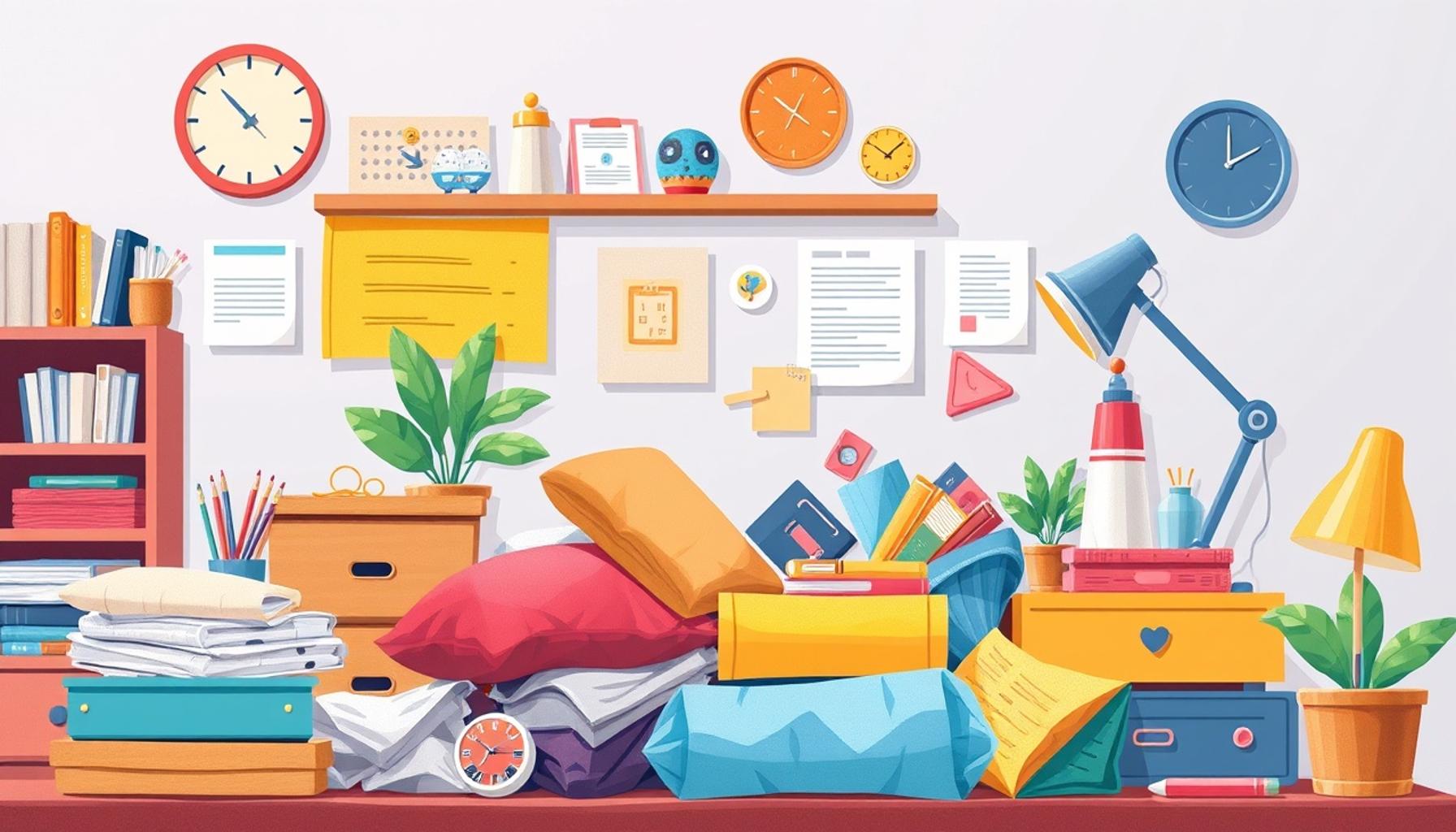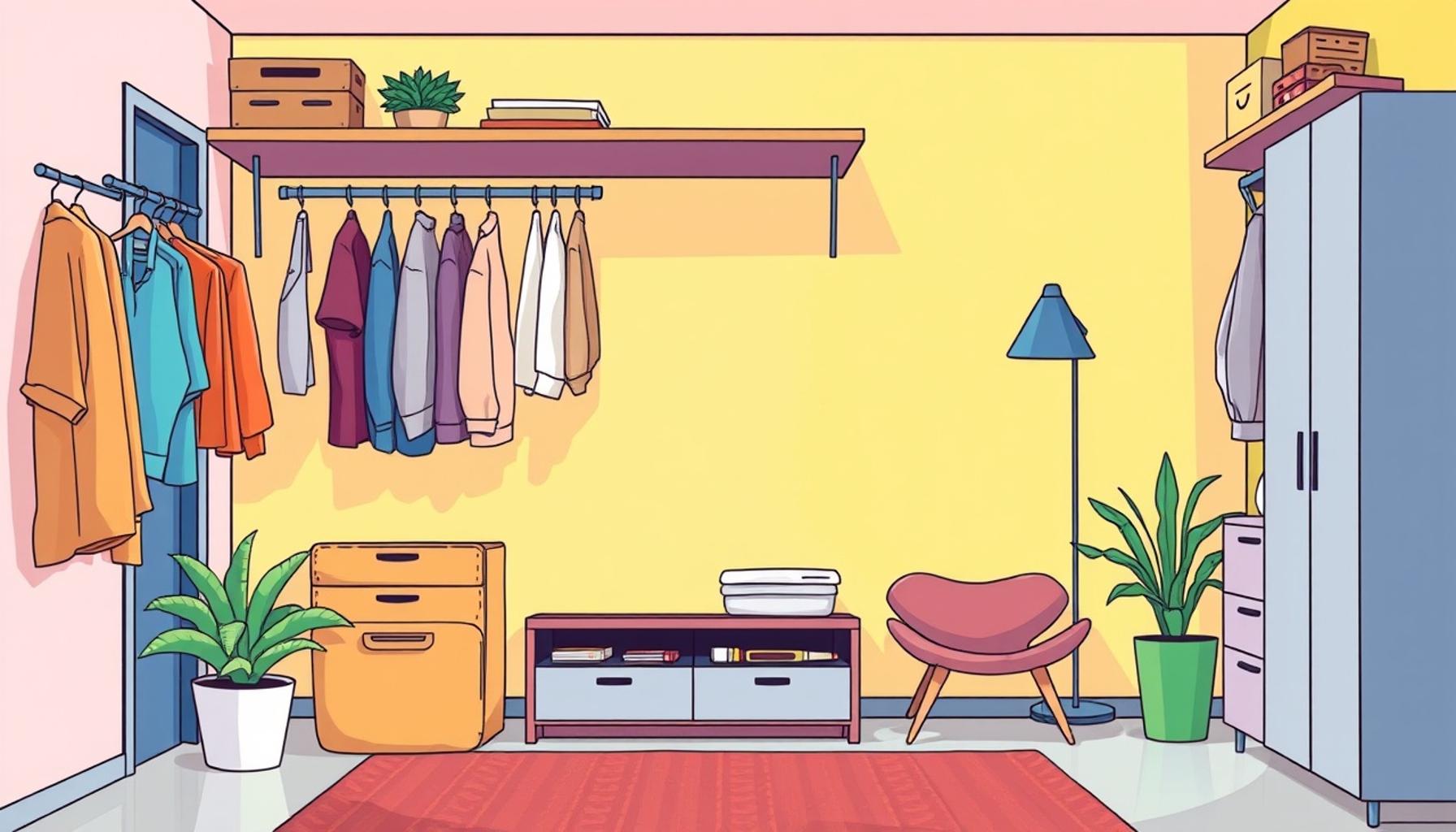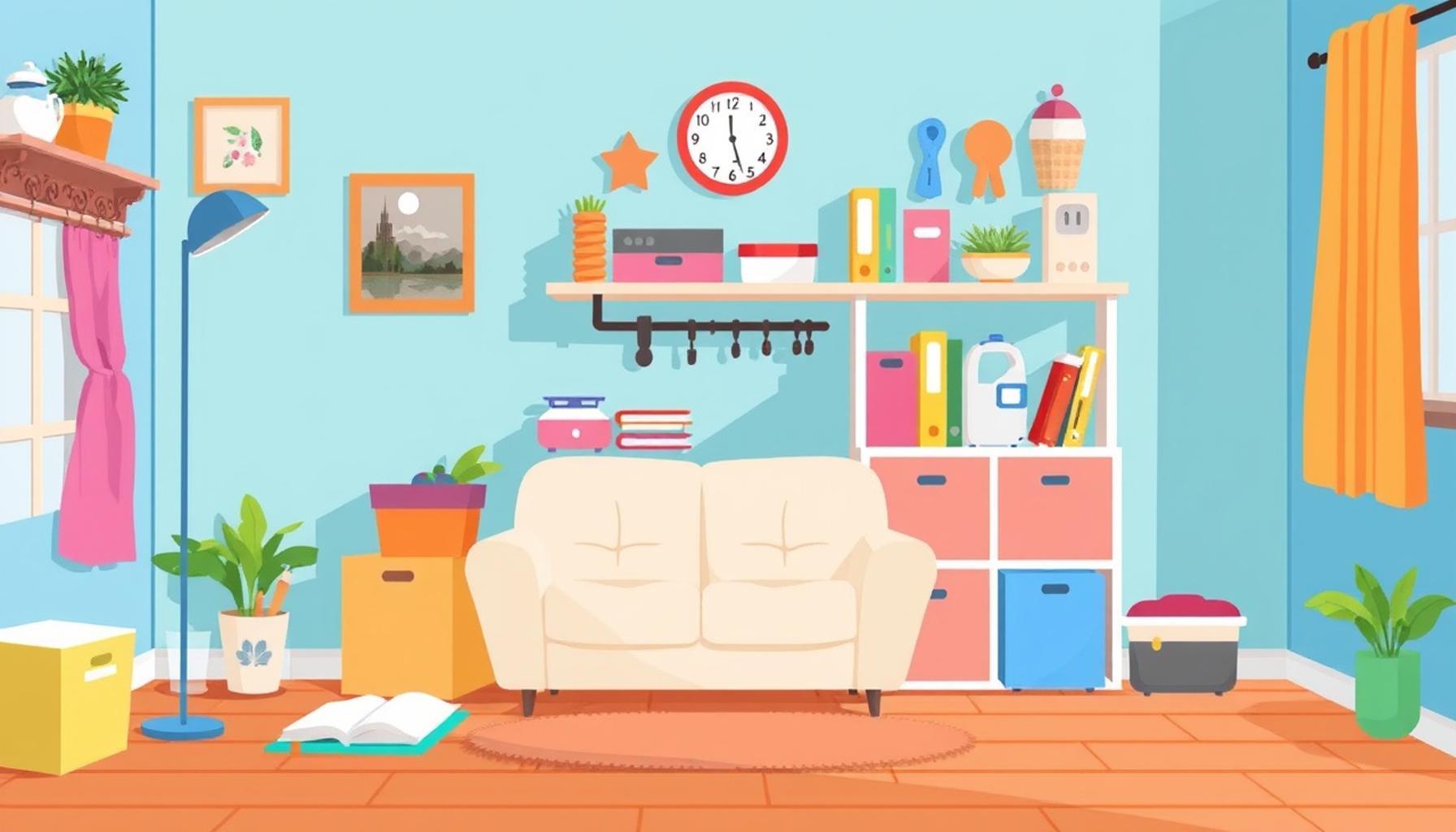Tips for Keeping Your Home Organized with Young Children
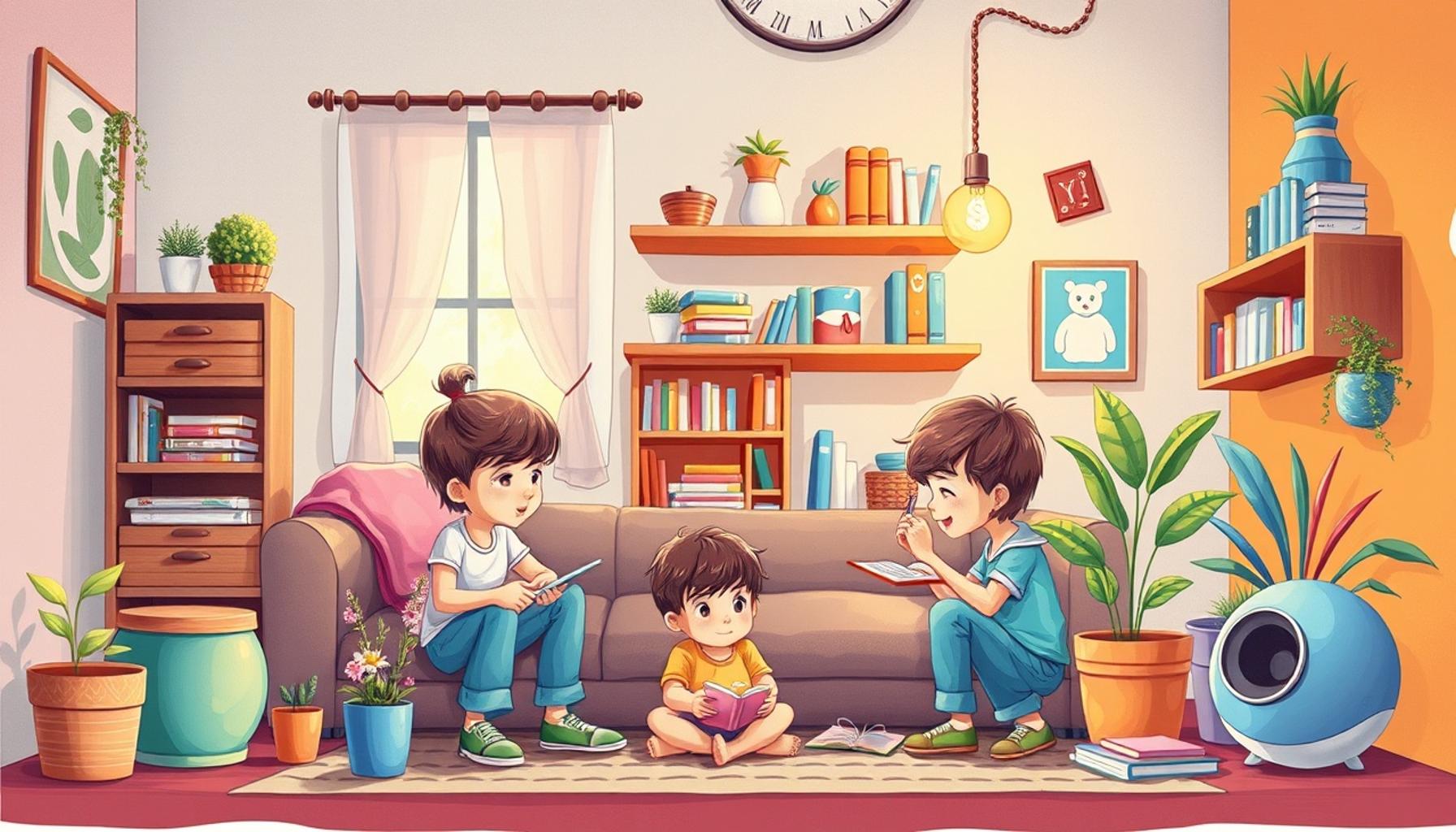
Introduction to Household Management
Managing a household with young children can feel like a never-ending juggling act. Toys, clothes, and various supplies seem to multiply overnight, making organization a daunting task. However, with the right strategies, you can reclaim your space and maintain a sense of order that benefits both you and your children. It is essential to create a structured environment where kids can thrive while also cultivating responsibility and independence.
Effective Tips for Organization
Consider these effective tips to transform chaos into calm:
- Establish designated areas: Assigning specific spots for toys, books, and craft materials is crucial. Designate a corner of the playroom for building blocks, a shelf for storybooks, or a cabinet for art supplies. This not only helps in decluttering but also empowers children to learn where items belong. For instance, consider using labels or color-coded bins that indicate where different toys should go, making it easier for younger children to identify their storage spots.
- Involve your children: Engaging kids in the cleaning process teaches them the value of tidiness. Turn clean-up time into an enjoyable family activity by playing music or setting a timer to create a fun race against the clock. For example, you could challenge your child to see how many stuffed animals they can put away in one minute. By making it a regular routine, children learn that maintaining a clean environment can be both rewarding and enjoyable.
- Utilize storage solutions: Investing in attractive storage options can make a significant difference. Consider stylish baskets or decorative bins that match your home décor, so they don’t detract from your living space. Adjustable shelving units can offer versatility as your child’s needs change—for instance, lower shelves can hold toys for toddlers but can be rearranged to store books for older children. Multi-functional furniture, such as ottomans that double as storage, provides an effective way to maximize space.
Building Lifelong Skills
Implementing these strategies not only promotes organization but also instills valuable life skills in your children. By including them in decision-making about where to keep items or how to sort their belongings, children learn critical thinking and responsibility. As they grow, these organizational skills will serve them well in school and later in life, fostering personal discipline and accountability.
By adopting consistent practices and remaining patient, parents can create a harmonious environment that encourages creativity alongside order. Your home can be both a nurturing space for fun and exploration and a well-organized sanctuary. Stay tuned as we dive deeper into practical tips and insights that can help you navigate the intricacies of parenting while maintaining a balance between chaos and order.
SEE ALSO: Click here to read another article
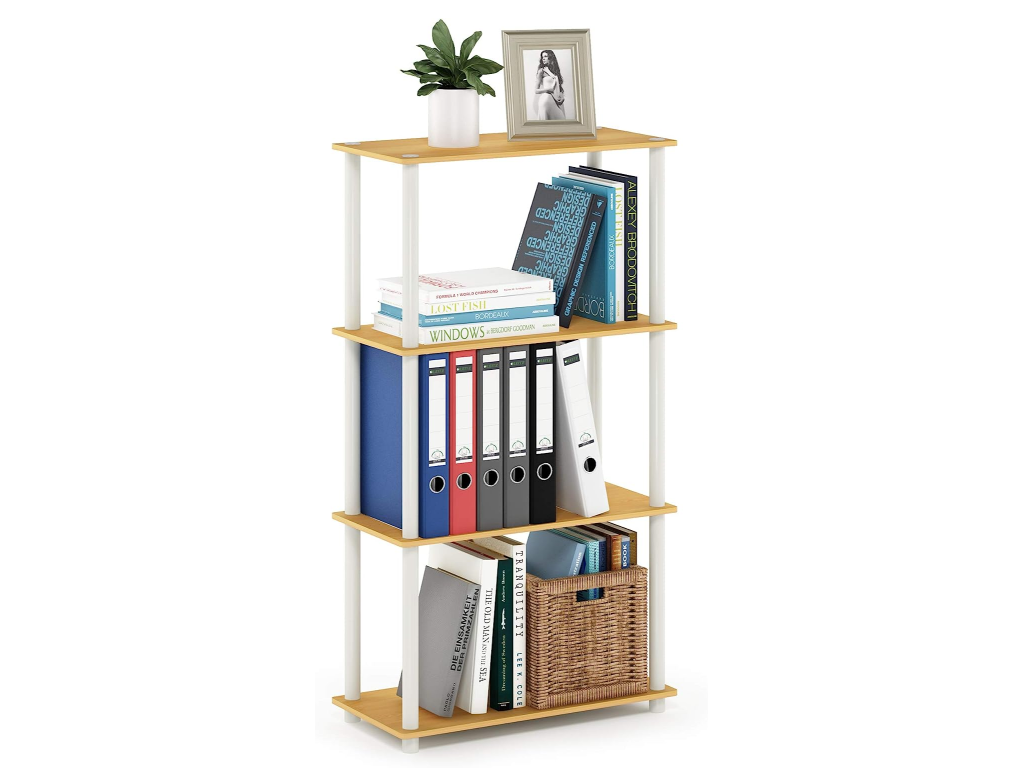
Create a Plan and Stick to It
One of the most effective ways to keep your home organized with young children is to devise a structured plan. This means setting clear boundaries and routines that everyone in the household can follow. Begin by developing a daily schedule that includes regular times for play, homework, meals, and clean-up. Having set times for these activities helps children understand the flow of the day and makes them less likely to feel overwhelmed.
Additionally, teaching your kids about time management can be beneficial. Use a visual timer or clock to help them grasp how long different activities should take. For example, explain that after 30 minutes of playtime, it’s time to help clean up. This not only assists in creating a tidy environment but also promotes a sense of responsibility among your children.
Establish a One-In, One-Out Rule
The clutter can quickly accumulate in a household with young kids, and one effective way to combat this is by implementing a one-in, one-out rule. This means that for every new toy or item that enters the house, a similar old item should be donated or discarded. Not only does this help control the number of possessions, but it also teaches children about the importance of making conscious choices regarding what they keep.
To make this practice enjoyable and manageable, involve your children in the decision-making process. Allow them to choose which toys or items they are willing to part with and explain the benefits of donating to those in need. Such conversations can establish an understanding of generosity and decluttering at an early age.
Prioritize Daily Maintenance
Maintaining an organized home with children requires daily upkeep. Setting aside a few minutes each day for quick clean-ups can make a world of difference. Encourage children to rename their cleanup efforts as “mini missions,” which can add an element of fun to what might otherwise be a tedious chore. For instance, designate five minutes at the end of playtime for everyone to tidy up their immediate area before dinner.
Here are some quick habits that can enhance your daily maintenance routine:
- Start each day with a quick tidy: Spend 10 minutes each morning clearing common areas where toys or clutter tend to accumulate.
- Make use of baskets: Place decorative but functional baskets in frequently used spaces, such as living rooms, to temporarily hold items during busy days. This can keep clutter at bay while providing a quick solution during unexpected visits.
- Prioritize easy access: Store frequently used items at children’s eye level so they can independently retrieve and return toys or books without assistance.
These small actions can lead to significant results over time, ensuring that everyone contributes to maintaining an organized environment. By creating a seamless blend of routine and fun, you can cultivate both orderliness and a sense of responsibility in your children, making the household a more pleasant place for everyone.
Strategies for Maintaining Order
When navigating the chaotic yet rewarding experience of parenthood, keeping your home organized can be a challenge. Here are crucial tips to help you maintain an organized environment even with the presence of young children.
Use Clear Storage Bins
Clear storage bins are a game changer in any household. They allow you to easily see what’s inside, making it simple for both you and your children to find and return items. Labeling each bin can further enhance organization, teaching your children valuable lessons on where things belong.
Create a Designated Play Area
Establishing a specific play area in your home can dramatically reduce clutter. This space should be easily accessible and filled with age-appropriate toys. Encouraging your children to play in this designated area will help contain messes and promote responsible play habits.
Implement a Daily Routine
Incorporating a consistent cleaning routine into your daily schedule can significantly impact the level of organization in your home. Setting aside a few minutes each day for tidying up instills discipline in your children and ensures that everyone participates in maintaining order.
Make Use of Vertical Space
In homes with limited floor space, utilizing vertical space becomes essential. Installing shelves or hooks allows for the storage of items out of reach from little hands, creating more space for play while keeping essential items organized and accessible for adults.
| Category 1 | Category 2 |
|---|---|
| Organization Tools | Storage bins, shelves, and hooks for efficient space use. |
| Routine Maintenance | Daily cleaning habits that involve all family members promote responsibility and order. |
These strategies offer practical solutions for busy parents. Don’t hesitate to explore more specific techniques and tailor these ideas to fit your family’s unique needs. Ensuring your home remains organized can lead to a more harmonious living environment for you and your children.
CHECK OUT: Click here to explore more
Get Creative with Storage Solutions
When it comes to organization, innovative storage solutions can make a significant impact in homes with young children. The goal is to create a space that is both functional and aesthetically pleasing. Utilizing multi-functional furniture is one effective technique. For instance, consider investing in ottomans with storage capabilities, or coffee tables that open up to reveal compartments for toys and games. This not only maximizes space but also keeps clutter from overwhelming your living areas.
Furthermore, employing vertical storage can help free up floor space. Wall-mounted shelves are excellent for displaying books and toys, while also providing children with easy access to their favorite items. Create designated areas for different types of play or activity: a reading nook with books organized by genre, or a crafting corner with supplies neatly stored in labeled bins. Teaching children where things belong promotes ownership and accountability.
Incorporate Kids into the Organization Process
Another effective strategy for maintaining an organized home is to involve children in the process from an early age. This participatory approach not only instills a sense of responsibility but can also be a fun bonding activity. Create a game out of organizing their play area; you might use a timer to challenge them to see how quickly they can put everything back in its designated spot. Alternatively, you can have family meetings to discuss organization goals, allowing children to express their ideas and preferences on how to keep their spaces tidy.
Labeling is one powerful technique to assist young children in understanding where items belong. Color-coded labels or pictures on storage bins can be immensely helpful for non-readers. A visual representation serves as a constant reminder, making your children less likely to misplace items. This practice fosters independence, as kids can manage their belongings with minimal adult intervention.
Create a Donation Station
As your children grow and their interests shift, it’s natural for toys and clothes to accumulate. To combat this, consider establishing a donation station within your home. Designate a box or area specifically for items that are no longer in use. Set a regular schedule for clearing out unnecessary items—quarterly is a great timeframe. This not only keeps your living space uncluttered but also makes it easier for children to actively participate in decisions about their belongings.
Encouraging this practice can help instill a sense of community and compassion in young ones. Discuss the importance of giving back to those in need, emphasizing how their little efforts can make a big difference in someone else’s life. Transform this routine into a family tradition by visiting local charities together, reinforcing a sense of pride in their contributions.
Lead by Example
Finally, one simple yet profound way to maintain an organized home is to lead by example. Children are keen observers and often mimic the behaviors of their parents. Make an effort to model good organizational habits. When they see you regularly decluttering, tidying, and managing your own belongings, they are more likely to adopt those habits themselves.
Consider designing a chalkboard wall or planner in a common area where you can jot down organizational goals or upcoming decluttering tasks. This visual reminder serves as both motivation and accountability for everyone in the household. In doing so, you create a culture of organization and respect for shared living spaces that ultimately benefits every family member.
SEE ALSO: Click here to read another article
Conclusion
Keeping a home organized with young children can seem daunting, but with the right strategies in place, it can lead to a more harmonious living environment for the entire family. By utilizing innovative storage solutions, you can transform cluttered spaces into organized havens that cater to both functionality and aesthetics. Involving children in the organization process not only teaches valuable lessons about responsibility but also fosters teamwork and bonding within the family unit.
Establishing systems like a donation station encourages kids to contribute to their surroundings and nurtures empathy as they learn the value of sharing with others. Meanwhile, leading by example demonstrates the behaviors you hope to instill in them, setting a standard for organization that they will likely adopt as they grow. Remember, consistency is key—creating a routine around tidying up and organization will set your family up for success.
Ultimately, these tips reflect a larger principle: organization is not just about keeping things tidy; it is about creating an environment where children can thrive, learn, and play freely. By implementing these strategies, families can enjoy a more organized home that supports both daily living and the developmental needs of young children. Start small, stay committed, and watch as your family embraces the benefits of an organized lifestyle.

